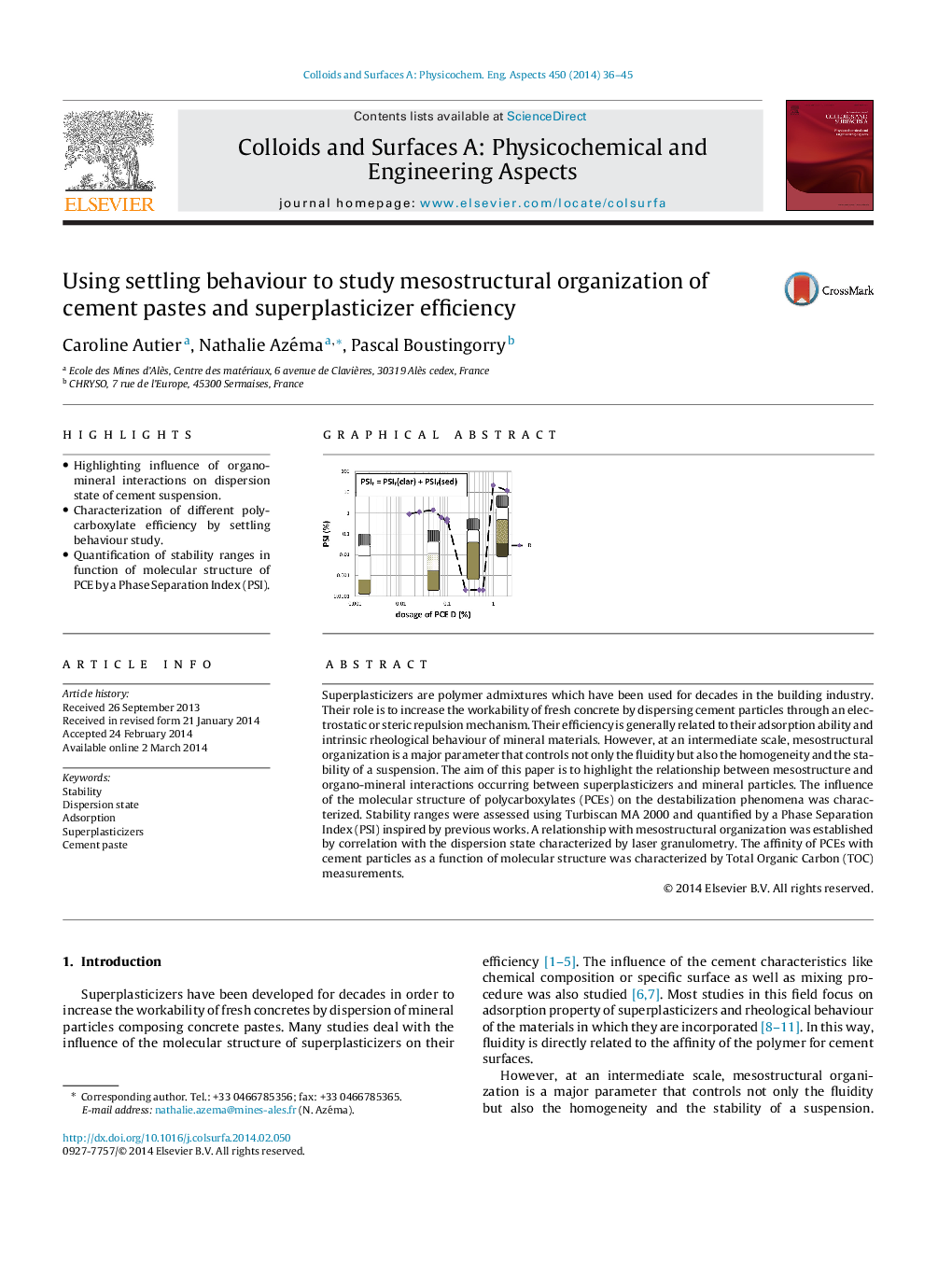| Article ID | Journal | Published Year | Pages | File Type |
|---|---|---|---|---|
| 592783 | Colloids and Surfaces A: Physicochemical and Engineering Aspects | 2014 | 10 Pages |
•Highlighting influence of organo-mineral interactions on dispersion state of cement suspension.•Characterization of different polycarboxylate efficiency by settling behaviour study.•Quantification of stability ranges in function of molecular structure of PCE by a Phase Separation Index (PSI).
Superplasticizers are polymer admixtures which have been used for decades in the building industry. Their role is to increase the workability of fresh concrete by dispersing cement particles through an electrostatic or steric repulsion mechanism. Their efficiency is generally related to their adsorption ability and intrinsic rheological behaviour of mineral materials. However, at an intermediate scale, mesostructural organization is a major parameter that controls not only the fluidity but also the homogeneity and the stability of a suspension. The aim of this paper is to highlight the relationship between mesostructure and organo-mineral interactions occurring between superplasticizers and mineral particles. The influence of the molecular structure of polycarboxylates (PCEs) on the destabilization phenomena was characterized. Stability ranges were assessed using Turbiscan MA 2000 and quantified by a Phase Separation Index (PSI) inspired by previous works. A relationship with mesostructural organization was established by correlation with the dispersion state characterized by laser granulometry. The affinity of PCEs with cement particles as a function of molecular structure was characterized by Total Organic Carbon (TOC) measurements.
Graphical abstractFigure optionsDownload full-size imageDownload as PowerPoint slide
